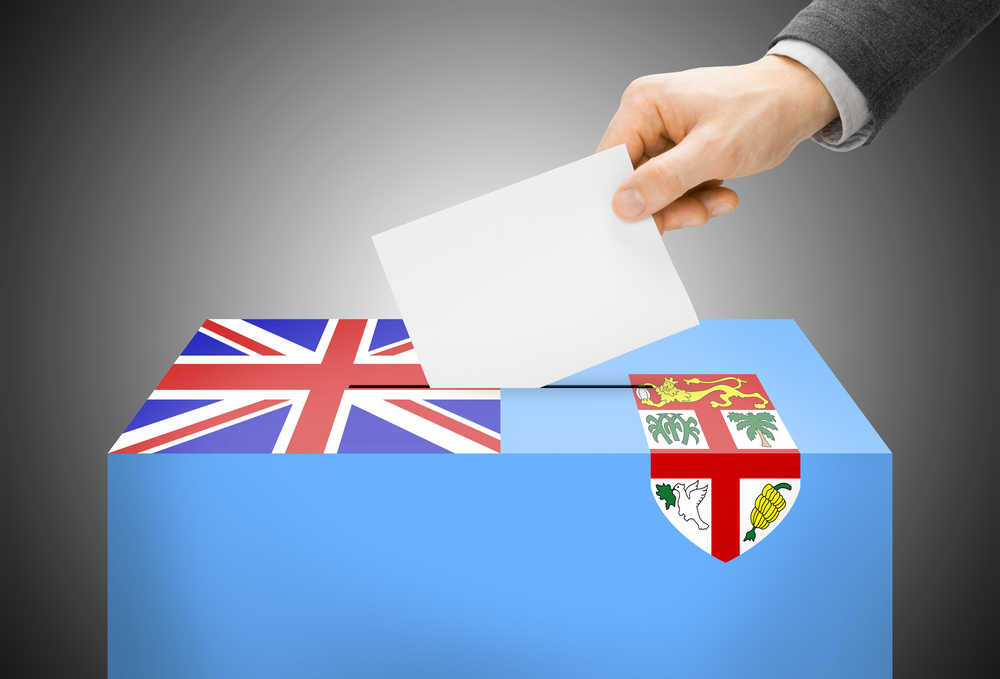Fiji’s Latest Voting Generation has Survived Four Coups Since 1987

Please note that we are not authorised to provide any investment advice. The content on this page is for information purposes only.
The ‘coup babies’ are the generation that were born around the years before and shortly after Fiji’s first coup of 1987. The majority of this generation voted for the first time in Fiji’s 2014 elections, after living through two coups in 1987, one in 2000 and a fourth in 2006.
The ‘coup babies’ are the generation that were born around the years before and shortly after Fiji’s first coup of 1987. The majority of this generation voted for the first time in Fiji’s 2014 elections, after living through two coups in 1987, one in 2000 and a fourth in 2006.
This generation has not lived in a period of genuine democracy, free from militarism, chiefly patronage, and racially based, and biased politics. According to preliminary figures, 47 percent of the voting population is within the ages of 18–35. Out this group, 75 percent voted for the first time.
The majority of these first-time voters were young people who formed a political conscience during an intense period of military rule from 2006–2014. For over half a decade, only one set of political views, those of the military, had exposure to these young minds. Stringent enforcement of media censorship assisted this suppression, which effectively strangled investigative and critical journalism in the country. The mangling of free thought in Fiji has resulted in a mediocre and passive media.
Expanding political resistance to the military began within blog sites, before moving to social media. In this new online space, dissenting voices, otherwise suppressed in a restricted media environment, were able to re-emerge.
Other reasons for the rise of social media in Fiji include the ability to communicate instantaneously and directly, especially with a growing youth population, increasing internet accessibility with expanding information and communications technology devices, and competitive costs. Most political parties extended their campaigns onto social media, concentrating more of their efforts on Facebook.
Facebook has become Fiji’s most use 22d social network, with 260,000 accounts as of January 2014. Seventy percent of Fijian Facebook users are aged 18–35. Young people are engaging actively on Facebook and are the key drivers in the expanding digital space of social media. Since they tend to express opposing views on social media, harnessing the youth vote online could potentially have resisted the military-led and -backed establishment.
But, as the election result showed, this was not the case. The military-backed and -led political party, Fijifirst, won 60 per cent of the vote in the 2014 national elections. Youth participation on social media was not enough to resist the established military powers. Why was this?
Facebook penetration is still only 24 per cent of the total estimated population of Fiji, which means that a substantial number of young people still have yet to access Facebook. Those that do access Facebook do not always actively engage in critical discussion online.
Despite social media’s expanding clout, traditional media still dominates in terms of penetration and audience size. Since traditional media is compelled to favour the ruling military, the government’s narrative therefore overwhelms any alternative social media narrative. As a result, critical youth engagement, which encompasses constructive criticism is still subject to the confines of traditional media and ultimately to the agenda of those who control and constrain it.
Fijifirst also appeared to be the most cognisant of the campaign advantages provided by social media. Fijifirst already had a head-start due to their domination of traditional media. The party then enlisted the services of a local communications company to administer the party’s social media campaign. They tailored and choreographed the political party’s image, successfully attracting an extensive online audience. The party’s social media savvy is through their use of specific techniques, such as multiple pages, publicly staged images, and concise statuses and captions. As a result, the Fijifirst party recorded almost 63 percent of the total Facebook audience.
It is highly likely that a substantial amount of Fijifirst’s engaged audience were young people. Effectively swaying young people to support the establishment came from traditional and social media.
Social media engagement in Fiji is rising dramatically even beyond the elections, as more and more young people now engage in Facebook group discussions. With more internet service providers in the country, internet access is expanding rapidly. This couples with a surge in hand-held devices with social media capabilities. With a new parliament in place, social media activity is increasing, particularly within opposition groups. The participation and engagement of young people with Fiji’s new parliament through social media has just begun.
Fiji’s ‘coup babies’ just starting to log on to democracy is republished with permission from East Asia Forum




